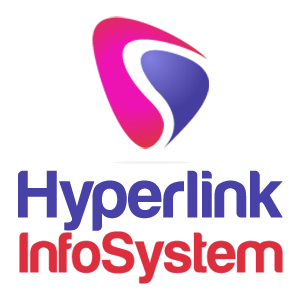
74% of sales teams using automation tools say it helps them close more deals [Source: HubSpot]. It makes sense because manual tasks slow you down. This is why Salesforce automation can streamline your tasks and boost overall productivity. But it’s evolving fast, getting smarter and making businesses more efficient than ever before.
In the last year alone, Salesforce has rolled out powerful new features that go way beyond just saving time. We’re talking about AI-driven decision-making, workflow orchestration and deeper integrations that let your tools talk to each other like old friends. Whether you're in sales, service, or marketing, Salesforce automation is reshaping how work gets done.
So, what’s new in the world of Salesforce automation? Let’s break it down!
Wait... Aren’t Salesforce automation and Sales Force automation the Same Thing? They sound the same. But they’re not. In fact, this tiny space between “Sales” and “force” makes a big difference.
Salesforce automation refers to the powerful tools and features within the Salesforce platform that help you automate processes across departments—sales, service, marketing, you name it. Think Flow Builder, AI-powered workflows, Slack integrations and more. It’s about making the entire Salesforce ecosystem smarter and faster.
Sales force automation (yep, with a space) is a broader industry term. It’s not specific to Salesforce. It simply means automating tasks for your sales team like tracking leads, sending emails, scheduling meetings and updating CRM records.
If you use Salesforce to automate lead assignments, that’s Salesforce automation and sales force automation.
But if you’re using a different CRM or tool to automate sales tasks, you’re only doing sales force automation, not Salesforce automation.
See the difference?
Understanding this distinction helps you set clearer goals. If you're planning to boost productivity across your business using Salesforce automation, you're thinking of the big picture.
But if you're only focused on your sales team’s day-to-day, you're leaning into traditional sales force automation.
Both are valuable. But Salesforce automation gives you a unified platform to connect teams, streamline operations and scale smarter.
Salesforce automation tools are your backstage crew doing the heavy lifting while your team stays in the spotlight. These tools take all the customer data, activities and workflows living in your CRM and turn them into time-saving actions.
Think of it like this: Instead of your sales team manually logging follow-ups, assigning leads, or sending reminder emails, Salesforce automation tools handle it all. That means less admin work, fewer missed opportunities and more time actually selling.
You’ve got several powerful options baked right into the Salesforce ecosystem:
- Flow Builder is the most versatile. It lets you build custom, automated workflows without touching a line of code. From onboarding emails to internal approvals, it’s all doable.
- Process Builder is great for simple automations like updating fields or sending alerts when something changes.
- Automation Studio inside Marketing Cloud is for your marketing team. It’s like mission control for emails, SMS and customer journeys.
- Apex Triggers are for developers and power users for building more advanced, logic-heavy automations.
- Einstein AI takes automation to another level. We’re talking real-time insights, predictive lead scoring and smart decision-making, all powered by Salesforce automation.
These tools help your business scale bigger without scaling your headcount. Basically, Salesforce automation tools make sure nothing falls through the cracks, whether you’re nurturing leads, closing deals, or offering post-sale support. It’s not about replacing people. It’s about letting your people focus on the work that actually matters. And let’s be honest, who doesn’t want to spend less time clicking and more time closing?
Salesforce automation has always been about doing more with less. But now, it's about doing more with intelligence. Now, we will discuss how each of the different automation tools in Salesforce work:
If you’re still using basic flows, it’s time to step up. Salesforce Flow is now smarter than ever thanks to Einstein AI integration. You can build logic that adapts in real-time.
For example, let’s say a lead comes in from a specific region. Instead of a static assignment rule, Einstein Flow can look at past performance, current pipeline load and even customer sentiment to decide who gets that lead. It's a smarter delegation.
And with the new Flow Orchestration features, you can build layered automations involving multiple teams, like auto-assigning tasks to sales reps, then notifying managers once milestones are hit.
Marketing Cloud users, rejoice. Automation Studio has become a beast. You can now set up complex, trigger-based customer journeys that adapt on the fly.
Think abandoned cart emails, followed by a discount if there's no purchase after 48 hours and a follow-up SMS if the customer clicks the email but doesn’t buy. All of this, handled by Salesforce automation in the background.
Plus, new AI-driven segmentation tools allow you to automatically target people based on behavior, not just static lists.
Remember when you had to pull data manually from your ERP or eCommerce system? Not anymore. Thanks to tighter MuleSoft integration, Salesforce automation can now trigger and respond to actions across any connected system.
Picture this: a customer places an order on your website. Instantly, Salesforce creates a new case, updates inventory via SAP and sends a follow-up email. No manual effort. No copy-paste chaos.
Salesforce bought Slack for a reason and it’s paying off. You can now trigger automated workflows inside Slack channels.
For instance, a high-value opportunity reaches 80% probability. Boom—a Slack message pings the account team, includes the latest deal updates and links to next steps. All handled through Salesforce automation.
And with Slack Canvas, you can generate automated summaries of account activity. Everyone stays in the loop without digging through records.
Salesforce automation is helping sales teams move faster and smarter.
Einstein Lead Scoring now factors in real-time data. Instead of just looking at title and industry, it evaluates email opens, site visits and past conversations.
The result? Reps focus on leads that are actually hot. Less time wasted, more deals closed.
Salesforce automation gives sales managers a bird’s-eye view. With AI-driven Opportunity Scoring and Pipeline Inspection, you can spot risks early.
It’ll flag deals where contact has dropped off, or where competitors are creeping in. Plus, automated nudges remind reps when it’s time to follow up.
Configure-Price-Quote (CPQ) is finally catching up. New automation features let reps build quotes with fewer clicks.
You can now create auto-discount rules based on customer tier, quote value, or even inventory levels. Once a quote is sent, follow-ups and approvals happen without anyone lifting a finger.
Let’s say a customer emails support. Behind the scenes, Salesforce automation routes the case based on topic, urgency and agent availability.
But it doesn’t stop there. It suggests article responses, fills in missing details and escalates when needed. Agents get to focus on helping, not ticket triage.
If you're in a service-heavy business, this is a game-changer. Connected devices can trigger automated service requests before something breaks.
Let’s say a sensor detects an HVAC unit is overheating. It pings Salesforce, which opens a case, schedules a tech and sends the customer a heads-up. Zero manual input.
Chatbots are now smarter thanks to Salesforce automation. They pull in customer data, understand intent and escalate only when needed.
That means your team handles fewer repetitive questions and more meaningful interactions. Everyone wins.
Goodbye change sets, hello streamlined deployments. DevOps Center brings modern version control and CI/CD tools to your Salesforce org.
You can now automate deployments, rollbacks and testing—with better visibility and less stress.
Salesforce automation is no longer a choice between clicks or code. You can now call Apex actions from Flows and vice versa.
This hybrid model gives developers and admins more flexibility to build complex logic without writing hundreds of lines of code.
What This Means For Your Business
Salesforce automation isn’t just a nice-to-have anymore. It’s how smart companies scale. Here’s what you can expect when you tap into the latest features:
- Faster response times for sales and service
- More personalized marketing with less effort
- Fewer errors from manual work
- Better alignment across teams
- Happier customers and employees
All of this means you get to focus on strategy and growth—while Salesforce automation handles the rest.
With artificial intelligence on the rise, it’s high time that businesses tap into this trend. Let’s take a close look at why you need to invest in automation as soon as possible:
Let’s be honest, most teams spend way too much time on tasks that could easily be automated. We’re talking data entry, lead assignments, status updates, follow-ups – the list goes on. And while those tasks may seem small, they add up fast. That’s where automation steps in and makes life easier.
With tools like Salesforce automation, businesses can cut down on repetitive work. The result? Teams get to focus on high-impact work instead of drowning in busywork.
These days people expect fast responses and tailored experiences. If your team is still handling things manually, you’ll fall behind quickly. Automation helps you meet customers where they are, faster and more accurately.
For example, using Salesforce automation, you can instantly assign leads, trigger follow-up emails, or escalate service cases without any delay. Everything feels seamless to the customer, which builds trust and boosts satisfaction.
Growth is great, but it brings more complexity like more customers, tasks and chances for things to slip through the cracks. Automation helps you scale without hiring an army.
Whether it's syncing data between platforms, onboarding new clients, or tracking sales pipelines, automation keeps your systems running smoothly 24/7. Thus, no burnout. No bottlenecks.
Automation isn’t about replacing people. It’s about empowering them to do better work. By automating what you can, you free up your team to focus on what really matters. This includes things like strategy, innovation and customer relationships.
So, at the end of the day businesses that embrace automation are more efficient, agile and better equipped to compete.
In short, if you're not automating yet, you're already behind.
Salesforce automation uses tools like Flows, AI and integrations to handle repetitive tasks in sales, marketing and support. It saves time and reduces human error.
No, small and mid-sized businesses can benefit too. Even automating a few key tasks can have a big impact on efficiency.
Start with repetitive, time-consuming tasks. Lead routing, follow-up emails and case assignments are good places to begin.
No, it actually frees up teams to focus on work that matters—like building relationships and solving complex problems.
Yes, Salesforce offers no-code and low-code tools like Flow Builder, which let you automate processes using simple drag-and-drop interfaces.
Salesforce automation has come a long way, from basic task handling to full blown intelligent workflows. With new tools like AI-powered Flows, Marketing Cloud upgrades and real-time Slack integrations, it's clear: the future of work is automated.
Whether you're in sales, service, or marketing, there's a way to make your day to day smoother and smarter. The best part is that you don’t have to figure it out alone. PixelConsulting.io helps businesses unlock the full power of SFDC. They offer Salesforce automation services, including strategy to implementation.
